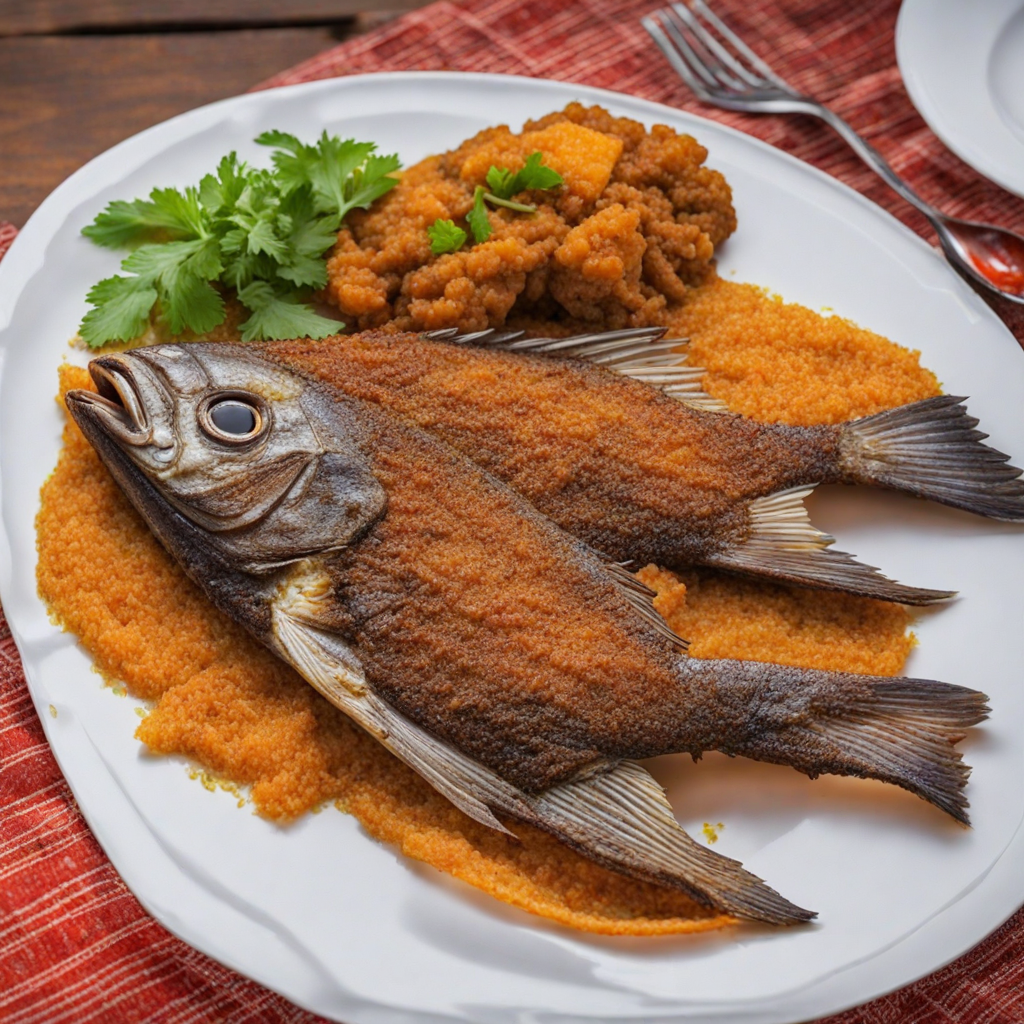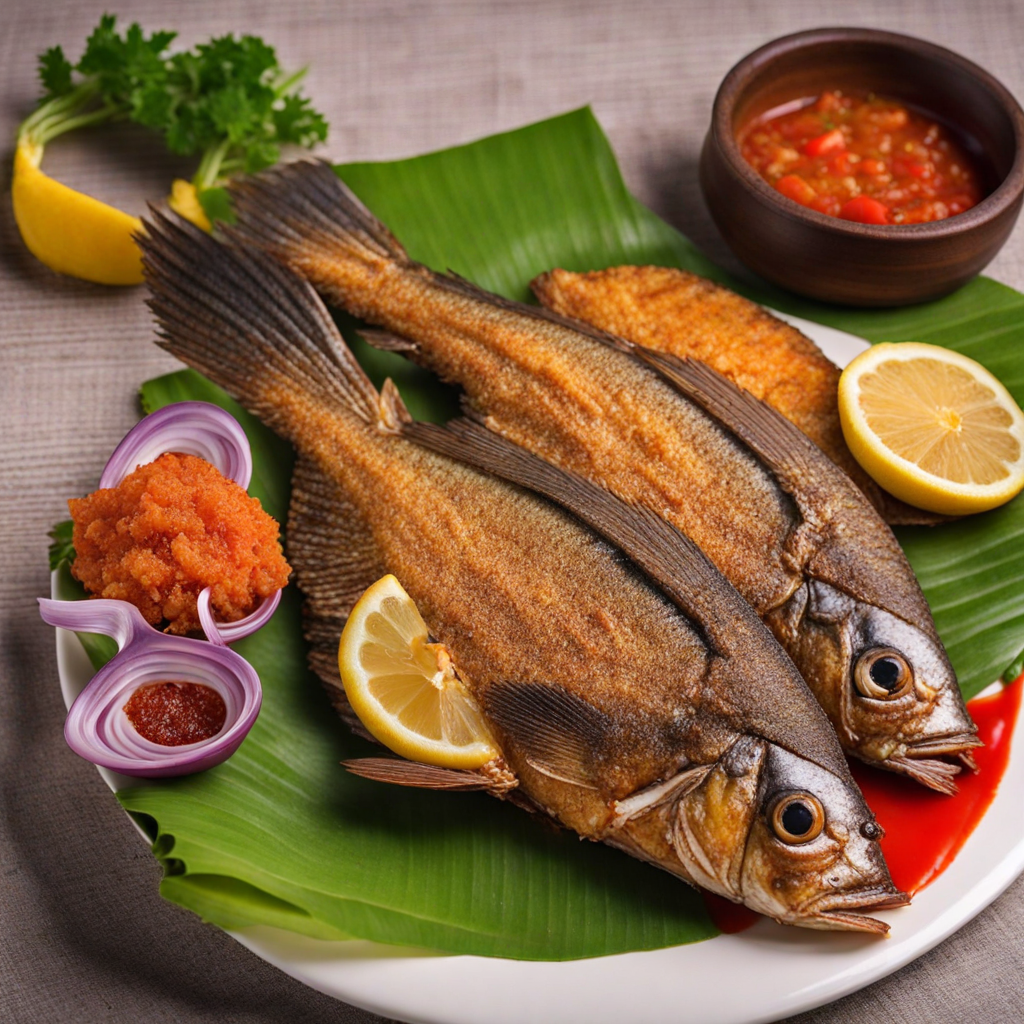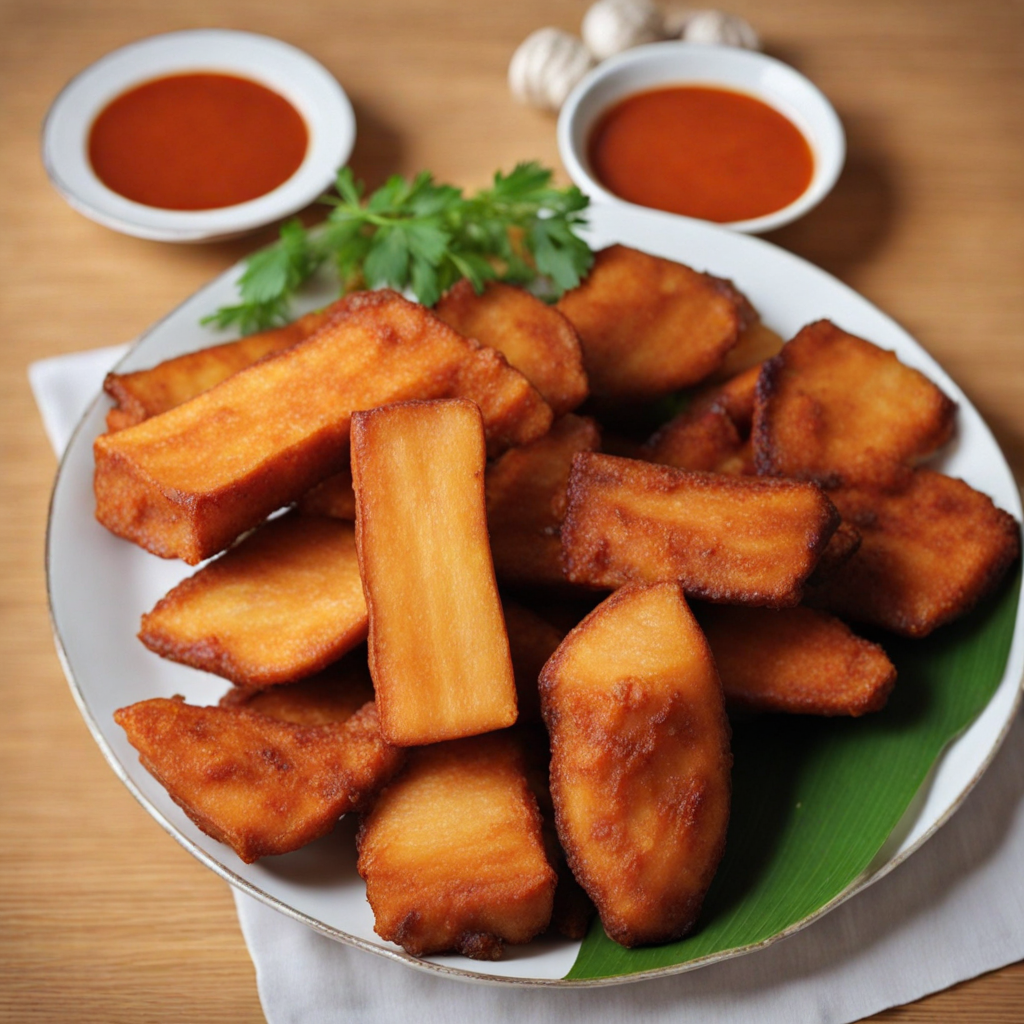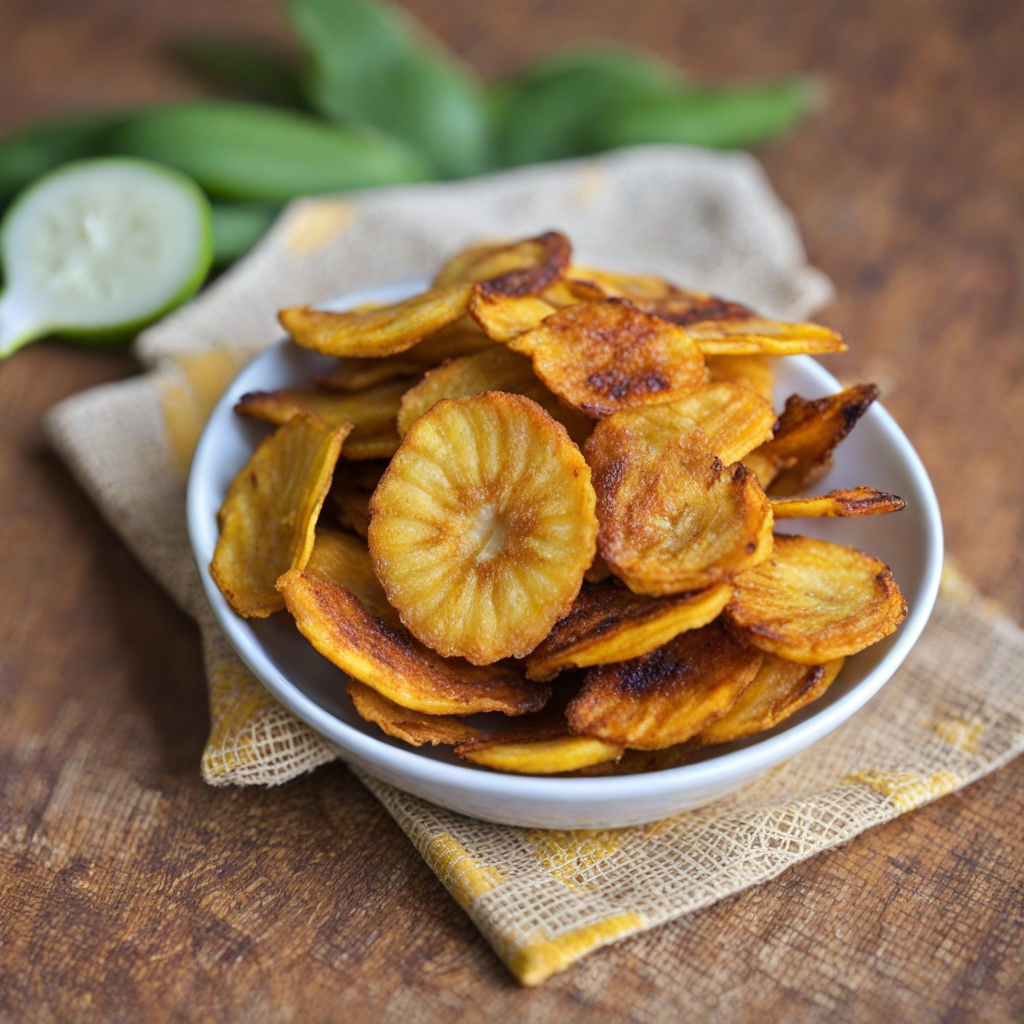Fried Fish
Fried Fish in Ghana is a culinary delight that encapsulates the vibrant flavors of West African cuisine. Typically made from fresh, locally sourced fish such as tilapia or catfish, this dish is renowned for its crispy exterior and tender, flaky flesh. The fish is often marinated in a blend of spices, including garlic, ginger, and chili, which infuse it with a rich depth of flavor. Once seasoned, the fish is deep-fried to perfection, resulting in a golden-brown crust that is both crunchy and satisfying, making it an irresistible treat for seafood lovers. Accompanying the Fried Fish are traditional Ghanaian sides that enhance its taste and texture. Common accompaniments include spicy tomato-based sauces, known as shito, which add a zesty kick, and a side of fried plantains that offer a sweet contrast to the savory fish. Often served with a fresh salad or a side of jollof rice, the combination creates a harmonious balance of flavors, showcasing the versatility of the dish. Each bite is a celebration of Ghanaian culinary traditions, reflecting the country's abundant natural resources and rich cultural heritage. Enjoying Fried Fish in Ghana is not just about the food; it’s an experience that brings people together. It is often shared among family and friends during gatherings, evoking warmth and connection. The dish is a staple at local markets and street food stalls, where it’s served hot and fresh, embodying the lively atmosphere of Ghanaian street food culture. For those eager to explore new tastes, Fried Fish offers an authentic taste of Ghana that is sure to leave a lasting impression on the palate.
How It Became This Dish
The History of Fried Fish in Ghana: An Engaging Culinary Journey Fried fish is more than just a popular dish in Ghana; it is a culinary staple steeped in history, culture, and the everyday life of its people. The origins of fried fish in Ghana are deeply intertwined with the country's geography, economy, and social practices, making it a fascinating subject of study for food historians and culinary enthusiasts alike. #### Origins and Early Preparation Ghana's coastline stretches over 500 kilometers along the Gulf of Guinea, providing an abundance of marine resources. The fishing culture in Ghana dates back thousands of years, with evidence suggesting that fishing has been a central part of Ghanaian life since ancient times. The Fante and Ewe people, among others, traditionally relied on fishing as a primary source of sustenance. Fish was not only a food source but also a means of trade, positioning it as an essential element of the local economy. The techniques of frying fish likely evolved as communities sought to preserve their catch. Drying and smoking were common methods of preservation, but frying offered a way to enhance flavor and texture, making it more appealing for immediate consumption. Early methods often involved simple heating of fish over an open fire, gradually evolving into more sophisticated techniques that incorporate local spices and seasonings. #### Cultural Significance Fried fish holds a special place in Ghanaian culture, symbolizing community, family, and tradition. It is often served during communal gatherings, celebrations, and funerals, signifying togetherness and the sharing of resources. The dish transcends social classes, enjoyed by both the affluent and the less fortunate, serving as a unifying culinary experience. In coastal communities, fried fish is often paired with local staples such as banku (a fermented corn and cassava dough) or yam. This combination not only showcases the versatility of fried fish but also highlights the importance of local produce in Ghanaian cuisine. The dish is often seasoned with a variety of spices, including ginger, garlic, and chili, reflecting the rich tapestry of flavors that characterize Ghanaian cooking. Moreover, fried fish has become emblematic of Ghanaian street food culture. Vendors can be found frying fish in bustling markets and along roadside stalls, making it accessible to a wider audience. The sizzle of fish frying in oil often draws in passersby, creating a lively atmosphere filled with enticing aromas. #### Development Over Time As Ghana underwent colonization and subsequent independence, the culinary landscape evolved, influenced by both indigenous practices and external forces. The British colonial period brought new cooking methods and ingredients to Ghana, including the use of frying oils and spices that were not traditionally part of Ghanaian cuisine. While these influences introduced new flavors, they also encouraged the preservation of traditional methods, resulting in a harmonious blend of old and new. The introduction of refrigeration and modern cooking appliances further transformed the way fried fish was prepared and consumed. While traditional frying methods using open flames remain popular, contemporary Ghanaians have embraced electric fryers and stoves, making the preparation process quicker and more efficient. This shift has allowed for greater experimentation with different types of fish and seasonings, leading to a diversification of fried fish recipes across the country. In urban areas, fried fish has also been adapted to suit modern tastes. Fusion cuisine has emerged, incorporating elements from other culinary traditions while maintaining the essence of the dish. For instance, fried fish tacos, a popular street food in some urban centers, reflect a merging of cultures that speaks to the globalization of food and the adaptability of Ghanaian cuisine. #### Modern-Day Fried Fish Today, fried fish remains a beloved dish in Ghana, celebrated for its flavor and cultural significance. It is featured prominently in both home cooking and restaurant menus, showcasing the culinary heritage of the nation. The rise of social media has also played a role in promoting fried fish, with food bloggers and influencers sharing recipes and experiences that highlight its importance in Ghanaian cuisine. Moreover, fried fish is often used in culinary competitions and festivals, celebrating not just the dish itself, but also the communal spirit it embodies. Events such as the Ghana Food Festival feature fried fish prominently, allowing chefs to showcase their skills while educating attendees about its cultural relevance. As Ghana continues to navigate the complexities of globalization, the role of fried fish has adapted yet remained constant. It serves as a reminder of the country's rich maritime heritage and the importance of community in preserving culinary traditions. The dish is a testament to resilience, as it has withstood the test of time, evolving with the changing dynamics of Ghanaian society. #### Conclusion The story of fried fish in Ghana is a rich tapestry woven from the threads of history, culture, and community. From its ancient origins along the coast to its modern manifestations in urban centers, fried fish has become a symbol of Ghanaian identity. It reflects the country's deep-rooted relationship with the sea, the significance of food in social gatherings, and the adaptability of its culinary practices. As we savor a plate of fried fish, whether at a bustling market or a family gathering, we partake in a tradition that has transcended generations. It is a dish that embodies the essence of Ghanaian life—vibrant, communal, and profoundly flavorful. Whether enjoyed simply with a touch of pepper sauce or elevated with contemporary flair, fried fish continues to occupy a cherished place in the hearts and palates of Ghanaians, both at home and abroad.
You may like
Discover local flavors from Ghana







